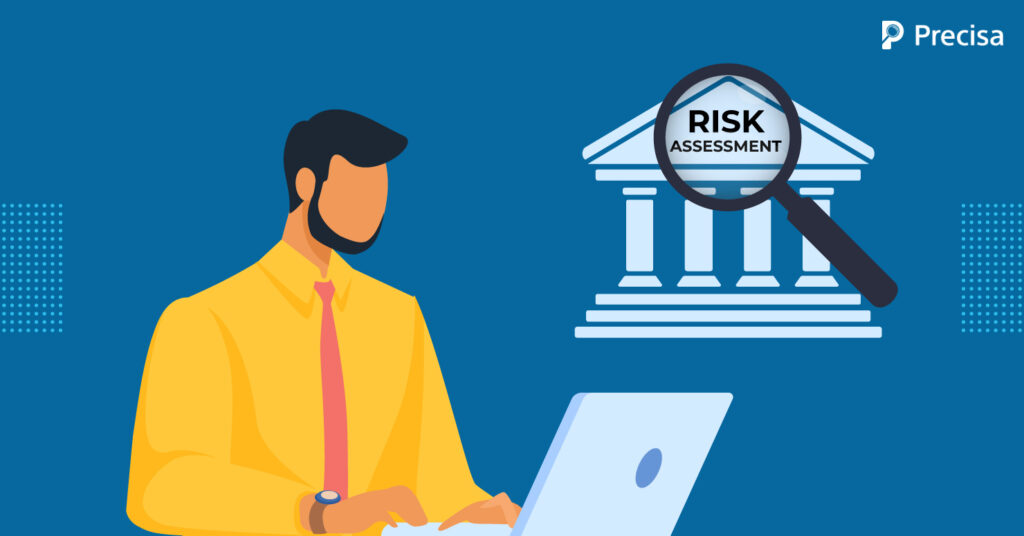Innovating Risk Assessment in the Age of Open Banking

Risk assessment makes or breaks a business model, especially in the banking sector. Establishing a solid process of risk assessment maximises business and minimises risks. This brings us to evaluate the current risk assessment practices and reassess how reliable or efficient they are.
Open banking enables this reassessment and gives the chance to eliminate any likely roadblocks that surface at large. So let’s discover the possibilities that open banking brings in the area of risk assessment.
Do Existing Risk Assessment Practices Suffice?
Simply put, risk assessment is the valuation of risk a potential customer or agreement brings.
The mainstream pattern of classifying risky or safe customers in the banking industry is through third-party sources like credit bureaus or sending instructions to include bank statements in the application process.
But, do the practices suffice the current modern-day needs and user experience?
The legacy process is lengthy, time-consuming, includes hectic waiting intervals, and involves multiple application requirements from a customer’s standpoint.
From a financial institution’s standpoint, people are more likely to abandon a lengthy process; there could be reliability issues with data, tampered data, dodgy ATM withdrawals, lack of data on spending patterns, cost of gathering data, etc.
The traditional practices only reveal a customer’s partial risk profile, overshadowing genuine risk.
Open Banking Commands Innovation In Risk Assessment

Open banking is about crafting a secure way of sharing personal and transaction information with multiple financial service providers. In addition, open banking provides third parties with the liberty to develop innovative products and services that challenge the ones that legacy providers offer.
Financial institutions can now dig deeper into customer data while performing risk analysis as up-to-date transaction data comes from the applicant’s bank.
Moreover, the data released is not only limited to a few months or a particular time interval but goes back to years. This makes it feasible for lenders to access their customer’s spending patterns.
Open banking triggers a convenient application process requiring minimal efforts from both the customer’s and company’s end.
Open Banking: Stabilising A Solid Framework of Risk Assessment
Here is how companies can leverage open banking to stabilise a risk assessment process that works for all the parties included:
Easy to adopt
Digitising a product is critical to making it successful in today’s market. The same is the case with banking. Open banking is meant to fast-track a loan application process, where customers can apply in just a few steps, with minimal documents. Open banking is all about convenience, a benefit that financial institutions enjoy besides customers, like a speedy operational process.
Reliable to the core
With innovative feasibility from open banking, high-quality data would be at the disposal of financial institutions. Moreover, updated data makes it easy for institutions to customise their risk assessment patterns and adopt a process that keeps maximum risk at bay.
Lays down the complete structure
Risk assessment is not done and dusted when backed by only a few recent bank statements. If lenders want to know the true financial strength and capacity, they need to dig deeper into spending and to earn patterns. Open banking gives a sneak peek into a person’s financial stability, not just a basic layout of recent spending behaviours, which could be misleading.
What’s More In Intelligent Risk Management?
People who make their debt payments on time are not necessarily financially secure. So open banking allows companies to go beyond credit scores and recent bank statements to assess risk assessment. As a result, this process has a better scope for reducing loan defaults and making accurate predictions.
Yes, based on the real-time data that open banking facilitates, companies can also predict future spending behaviours and credit needs.
Tech-savvy companies using self-learning algorithms can create AIs that can make future predictions. These predictions can be used to improve customer experience or scale business.
Summing Up
Summing up, the concept of risk assessment in the age of open banking has changed how it is viewed. Open banking gives you a better insight into lending risks and all the means to dodge situations of non-payment.
Data at your disposal would be more reliable than ever and in length from extended timeframes, making it easy to gauge a customer’s financial health. As a result, making informed decisions with minimal risk would become a regular drill.
Innovation in risk assessment is barging into the ladder of the banking ecosystem. Companies that choose to ride the wave of innovation would prosper, cutting through specific time-consuming roadblocks which can otherwise be avoided.
Precisa spares you the hassle of manual risk assessment while weighing an applicant’s risk. Our tool is easy to use and navigate. It scans through important risk assessment metrics in a small time frame, eliminating possible human error.
If our product sounds fascinating to you, you can now avail of our 15 days free trial version. So let’s strengthen security and minimise risk, shall we?


